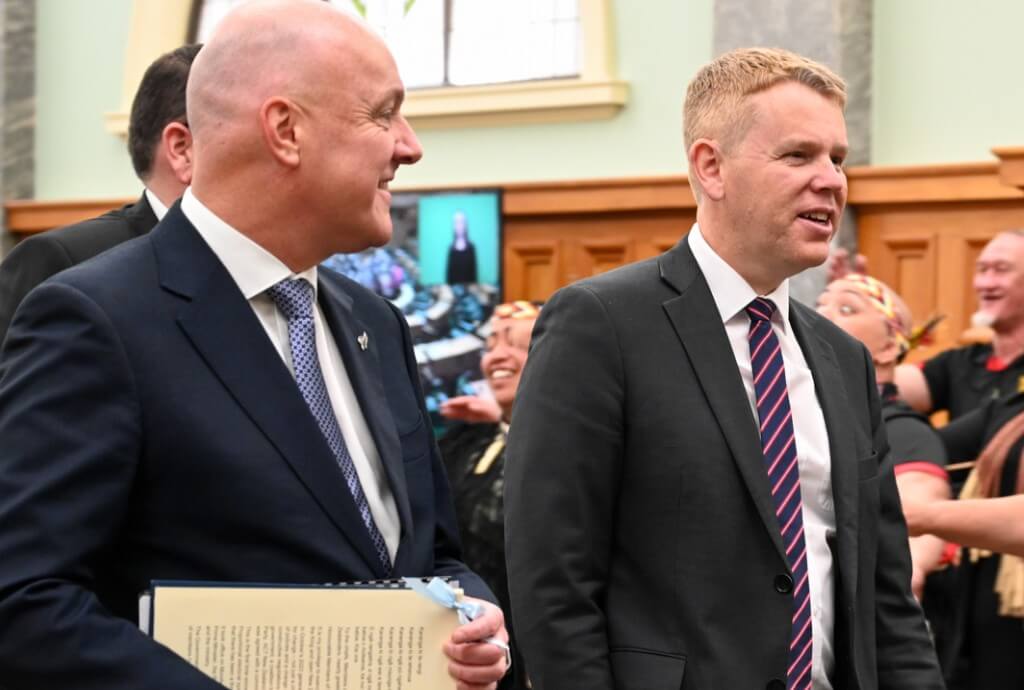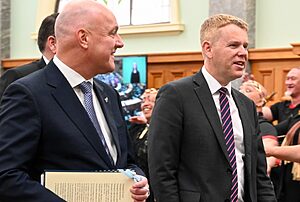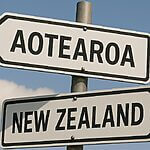In brief
- Both embrace identity politics, endorse the same co-governance interpretation of the Treaty, and have leaders accused of espousing racist rhetoric.
- Both support ethnic-based (Māori) rights over fresh water.
- Both call for wealth taxes to be implemented.
- Both want NZ to withdraw from the Five Eyes compact.
Let us count the ways…

If Labour has any chance of regaining Parliament in October, it’s going to need the help of the minor parties on the left.
The two parties, Te Pāti Māori (TPM) and the Green Party, share a lot of overlap in policies pertaining not only to the environment, but social views as well.
Let’s take a look at a few ways the parties are more similar than different.
Environment
Obviously the Green Party is traditionally very strong on environmental policy. Co-leader James Shaw has been the Minister for Climate Change since the party signed a cooperation agreement with Labour after the 2020 election.
TPM also touts strong views in this area. Dealing with climate change has been part of TPM’s founding principles since the party was established in 2004.
Both parties hold up Māori as having intrinsic kaitiaki (guardianship) rights over the environment. Both endorse Māori ethnic-based Te Mana o te Wai (the power of water) interests to be established over fresh water resources.
Both have floated possible bottom lines to forming a coalition during this election related to the environment. The Greens want a Zero Waste Minister and TPM wants a ban on seabed mining.
Co-governance and identity politics
They both adopt an interpretation of the Treaty that says Māori never ceded sovereignty. They share calls for constitutional transformation, which puts “tino rangatiritanga” (chiefly possession) as a central tenet. This essentially means they interpret Article 2 of the Treaty to mean nothing less than full sovereignty for Māori along with the notion there is a “partnership” with the Crown.
Both have co-leaders who have espoused strident anti-white rhetoric. They both blame colonisation for the disparity in outcomes experienced by Māori in health, education, etc.
TPM is petitioning to change the name of the country from New Zealand to Aotearoa. The move has the personal endorsement of Greens co-leader James Shaw.
Wealth tax
The Greens and TPM both advocate for the introduction of a wealth tax to pay for their proposed social programs.
Some left wing commentators say TPM’s tax policy is “as close to socialism as we are going to get”.
The top rate of TPM’s wealth tax is set to 8%, while the Green Party’s proposed wealth tax is 2.5%.
The Greens are committed to a Universal Basic Income, while TPM “would ensure that no one lives below the poverty line”.
The Greens advocate for land to be “returned” to Māori. TPM takes it further: along with demands to “return” conservation land to Māori, amongst other demands, is a call to end “full and final” settlements of land claims.
Foreign policy
TPM has called for a Swiss-style “neutrality” in foreign policy while the Greens don’t want to spend on the US “war machine”.
Both TPM and the Greens have called for withdrawing from the Five Eyes intelligence compact, although Greens have not pressed their demand since joining the Government.



















